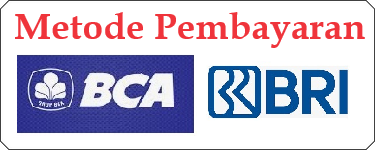PENGARUH BAKTERI ENDOFIT ASAL POHON BERHABITAT BASAH TERHADAP PERTUMBUHAN DAN PRODUKTIVITAS PADI SAWAH (Oryza sativa)
DOI:
https://doi.org/10.69840/marsegu/2.5.2025.301-315Keywords:
Endophytic bacteria, Rice paddy growth, Plant productivity, Oryza sativa, Wet habitatAbstract
This study focused on the effect of endophytic bacteria from trees with wet habitats on the growth and productivity of lowland rice (Oryza sativa). Endophytic bacteria were obtained from root extracts of three plant species, namely kayu burung (bird's wood), forest catangensis (katapang hutan), and kayu marsegu (marsegu wood). Samples of the roots of kayu burung (bird's wood) and kayu burung (bird's wood) were collected from Ambon Island, while the roots of katapang hutan and kayu burung (bird's wood) came from Seram Island. The study used a descriptive method with field observations. Parameters observed included plant height, number of leaves, and dry grain weight per stem. The results showed that the highest average plant height was obtained in the treatment of endophytic bacteria from kayu burung (14.16 cm), followed by kayu marsegu (12.16 cm) and katapang hutan (10.16 cm). The treatment of endophytic bacteria containing Monococcus, Streptococcus, and Staphylococcus had a positive effect on vegetative growth and rice production. Endophytic bacteria from marsegu wood and forest catangensis produced the highest dry grain weight, namely 1.216 g per stem. These results demonstrate the potential of endophytic bacteria from forest plants as biological agents to increase rice productivity in lowland rice.
Downloads
References
Dahlan, A. 2012. Peran padi (Oryza sativa) sebagai komoditas pangan utama dan sumber karbohidrat masyarakat Indonesia.
Elbeltagy, A., Nishioka, K., Sato, T., Suzuki, H., Ye, B., Hamada, T., Isawa, T., Mitsui, H., & Minamisawa, K. 2001. Endophytic colonization and in planta nitrogen fixation by a Herbaspirillum sp. isolated from wild rice species. Applied and Environmental Microbiology, 67(11), 5285–5293. https://doi.org/10.1128/AEM.67.11.5285-5293.2001
Hanafiah, M. K. A. 2016. Rancangan Percobaan. Jakarta: Raja Grafindo Persada.
Gardner, F. P., Pearce, R. B., & Mitchell, R. A. C. (1988). Growth and Development. In Physiology of Crop Plants (pp. 185–208). Ames, IA: Iowa State University Press
Gusmani., Sandra, A. A., Abdul, M., Didy, S., Nurliani, B. 2013. Potensi Bakteri Endofit. Jurnal Littri 19(4), Desember 2013. Hlm. 167 - 177.
Hidayatun, N., Susilowati, D. N., & Mulya, K. 2011. Identifikasi 26 isolat bakteri endofitik dan filosfer padi dengan analisis sekuens 16S rDNA. Berita Biologi, 10(4).
Mendes, R., Pizzirani-Kleiner, A. A., Araujo, W. L., & Raaijmakers, J. M. 2007. Diversity of cultivated endophytic bacteria from sugarcane: Genetic and biochemical characterization of Burkholderia cepacia complex isolates. Applied and Environmental Microbiology, 73(22), 7259–7267. https://doi.org/10.1128/AEM.01222-07
Munif, A., Suryo, W., Suwarno. 2012. Isolasi Bakteri Endofit Asal Padi Gogo dan Potensinya sebagai Agens Biokontrol dan Pemacu Pertumbuhan. Jurnal Fitopatologi Volume 8, Nomor 3, Juni 2012 Halaman 57-64, 64.
Munif, A. Wiyono, dan S. Suwarno. 2012. Pemanfaatan Bakteri Endofit Untuk Meningkatkan Pertumbuhan dan Kesehatan Tanaman Padi Gogo. Prosiding Seminar Hasil-Hasil Penelitian IPB 2012, 417.
Nuruwe, C. D., J. M. Matinahoru., M. H. Hadijah. 2020. Isolasi dan Identifikasi Bakteri Endofit Beberapa Jenis Pohon Berhabitat Basah. Jurnal Budidaya Pertanian Vol. 16 (1):65-70. ISSN: 1854-4322.
Pradana, A., P. Diana, P., Abdul, M. 2015. Eksplorasi Bakteri Endofit dari Akar Tanaman Adam Hawa dan Potensinya sebagai Agen Hayati dan Pemacu Pertumbuhan Tanaman Padi. Volume 11, Nomor 3, 73-78.
Sanny, L. 2010. Analisis Produksi Beras di Indonesia. Binus Business Review Vol.1 No.1 Mei 2010: 245-251.
Sastrapradja, E. A. 2012. Pertumbuhan dan adaptasi padi di berbagai jenis lahan: sawah tergenang dan lahan kering.
Suriaman, E. 2010. Potensi Bakteri Enofit dari Akar Tanaman Kentang (Salanum tuberosum) dalam Memfiksasi N2 di Udara dan Menghasilkan Hormon IAA (Indole Acetid Acid) Secara In Vitro. Fakultas Sains dan Teknologi Universitas islam Negeri Malang.
Zain, N. M., Taufiq, B., Irawan, S. 2018. Kontribusi Nitrogen dari Bakteri Endofit pada Tanaman Padi. Jurnal Ilmiah Aplikasi Isotop dan Radiasi.
Downloads
Published
Issue
Section
License
Copyright (c) 2025 Mutia Nawawi, Johan Matinahoru, Miranda Hadijah (Author)

This work is licensed under a Creative Commons Attribution-ShareAlike 4.0 International License.




















